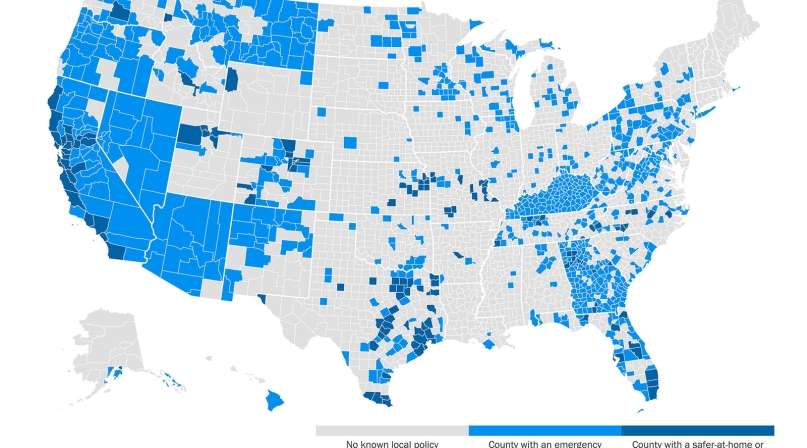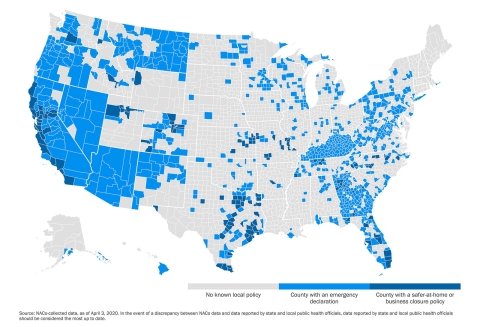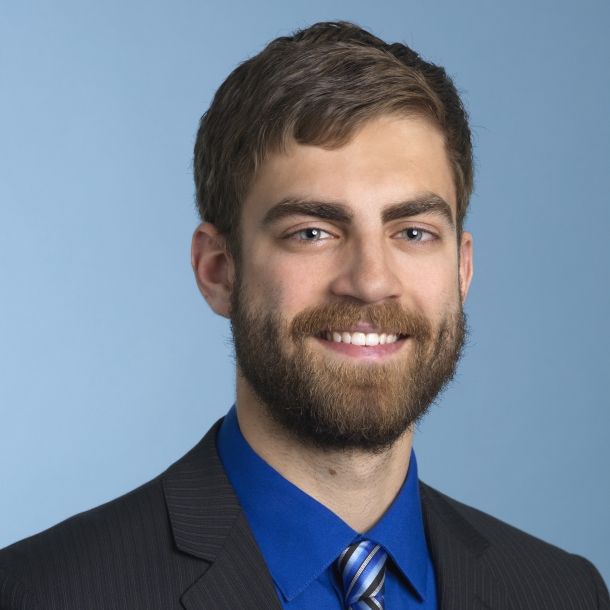Nearly 311 million under ‘safer at home’ orders

As of April 6, nearly 311 million residents in at least 41 states, 148 counties, 14 cities, the District of Columbia and Puerto Rico were under orders to stay at home unless leaving for an essential purpose or activity, according to data from The New York Times. With nearly 337,000 COVID-19 cases nationwide and nearly 10,000 deaths as of April 6, state and local leaders see mandated social distancing as a key to slowing the spread.
“Safer at home” policies — also known as “stay at home” or “shelter in place” orders — direct residents to stay at home unless they are engaging in “essential” activities. The county or state designates these essential activities, which typically include food shopping, doctor’s visits, buying medical supplies, buying supplies to work from home, working in an “essential” business, taking care of family and friends or exercising at least six feet away from others.
Do More
Contact us if your county or state has declared an emergency not reflected in County Explorer
The purpose of these policies is to reduce the spread of COVID-19, preserve critical and limited healthcare capacities in counties and prevent the healthcare system from being overwhelmed by patients. Safer at home policies aim to prevent new clusters of the disease from forming by closing businesses and areas where people tend to congregate and where the virus could easily spread.
Safer at home policies primarily prohibit gatherings outside of the home (especially in groups of 10 or more) and traveling within a county or across county lines (by car, motorcycle, bicycle, foot or any other means), unless for an essential activity. Residents who ignore the policy may face a misdemeanor punishable by fine, imprisonment or both.
Safer at home orders nearly always close down nonessential businesses and any other nonessential places where people could potentially gather, including restaurants (for dine-in), bars, gyms and recreation facilities. Some counties and states, though, have ordered the closure of nonessential businesses without instructing residents to stay at home. The primary difference between the two orders is that safer at home policies explicitly restrict the movement and activities of individual residents, while business closure policies only restrict the activities of businesses.
There are different ways that counties and states are deciding which types of businesses are essential versus nonessential. Most counties and states are following the U.S. Cybersecurity and Infrastructure Security Agency’s (CISA) guidance to decide which types of businesses count as essential or nonessential, though many with modifications. CISA’s list is not exhaustive, nor is the guidance mandatory; rather, CISA provides broad guidelines to help local governments identify key operations that ought to continue in this time of crisis.
State and local leaders know our communities best and should be empowered to decide what types of industries local economies need to continue functioning, should the need for a nonessential business shutdown arise.
County officials are working around the clock to ensure the safety and wellbeing of all residents during the COVID-19 pandemic.
Though reluctant to impose measures that may impact their local economies, counties recognize that safer at home policies and closures of nonessential businesses can help to curb the spread of COVID-19. Ultimately, local leaders, in consultation with their state partners and in line with federal guidance, should decide which measures are needed to protect their communities. NACo’s analysis of safer-at-home orders is informational and is not intended to serve as policy recommendation.

Attachments
Related News

House passes three-year extension of ACA Enhanced Premium Tax Credits
On January 8, the U.S. House of Representatives passed legislation to extend enhanced Affordable Care Act (ACA) premium tax credits (EPTCs) for three years, sending the measure to the Senate as lawmakers work to negotiate a bipartisan compromise.

CMS requires state Medicaid suspension upon arrest versus termination
Effective January 1, 2026, federal law now requires states to suspend, rather than terminate, Medicaid coverage when an individual is incarcerated.

ICE hiring surge challenges county law enforcement
Local governments hope that their law enforcement personnel will favor the familiarity of the communities they serve when weighing potentially lucrative immigration enforcement recruitment bonuses, which may require them to uproot their lives.
